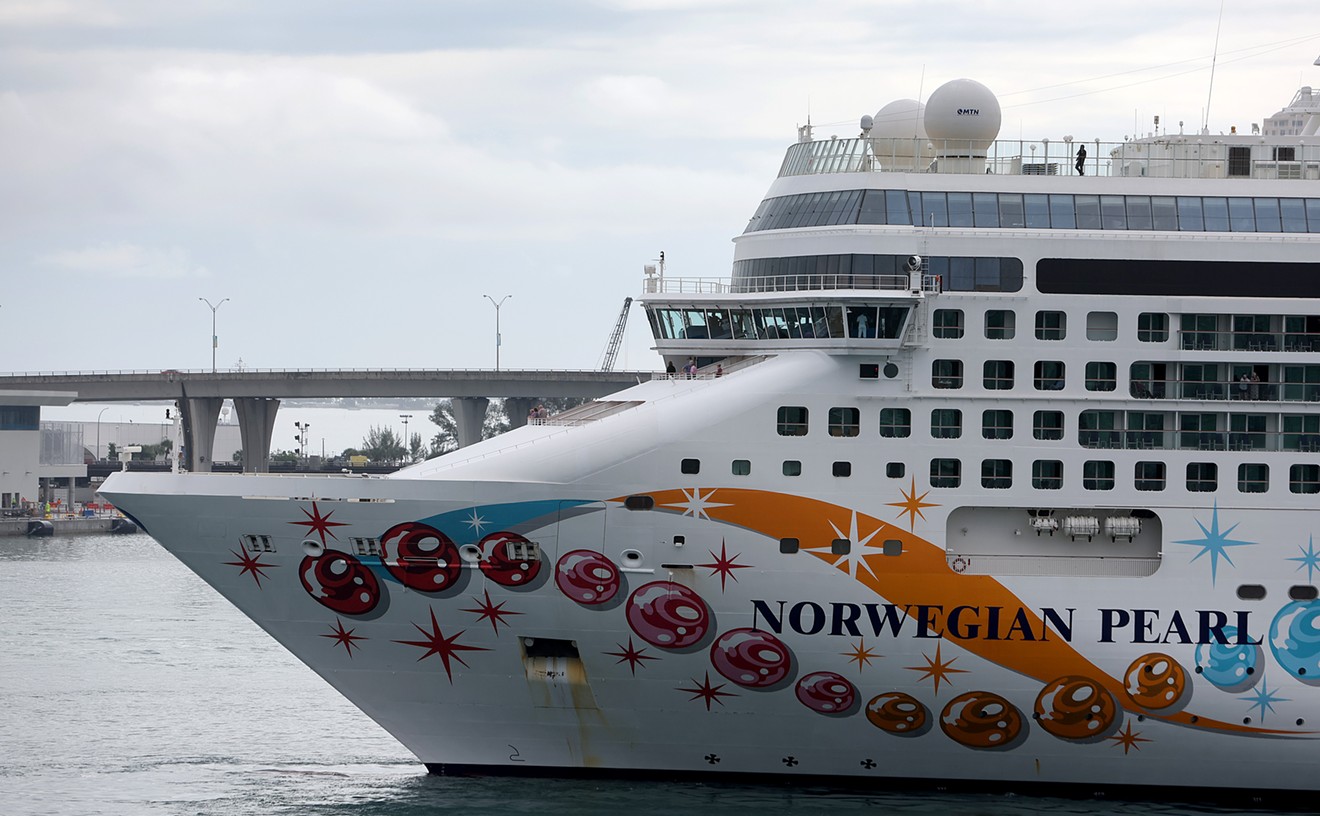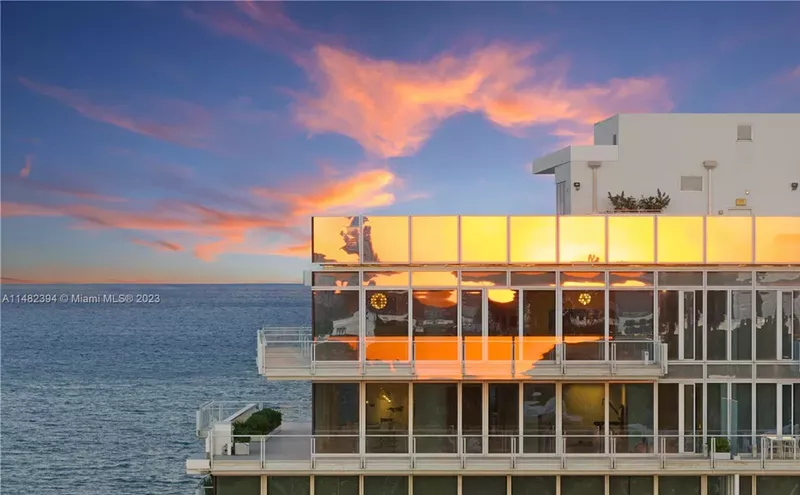It's not for lack of trying that Polakoff and Carver have been unable to perform this seemingly simple feat. And it's not for lack of money. Over the past two and a half years they've pleaded their case before the historic preservation board (twice), the city commission (twice), a circuit court judge (once), and an appellate court panel (once). To date, as they gird for combat yet again, they have shelled out $90,000 in legal fees to three different lawyers.
Still no fence.
The controversy, which city officials call one of the most intense ever in a local historic-preservation district, pits a property owner's right to privacy against the public's right to natural and historic resources -- in this case an unobstructed view of Biscayne Bay. Unlike the land at most other bayside cul-de-sacs in the city, the 45-by-70-foot plot at the terminus of NE 57th Street is not public land. It was deeded to James Nunnally, the man who developed the residential neighborhood and lived in the house Polakoff and Carver now own. The present inhabitants want to assert their ownership of that controversial parcel by enclosing it as part of their yard, a move their neighbors have countered with fierce opposition under the battle cry "Save Our Bay Vista." A fence, they argue, would not fit with the preservation guidelines for the district.
Both sides claim they've got historical precedent on their side. Polakoff and Carver say Nunnally built a boathouse on the contested parcel and that a six-foot-high hedge once blocked the bay vista. Opponents agree that there was a boathouse but say it didn't obscure the view. They also question the existence of a hedge.
"Everybody wants to tell everybody else what to do, but we want to run our own house. They're just trying to take our land. Is that America?" fumes Polakoff, a corporate securities lawyer who moved to Miami from New York in 1988. He and Carver, a real estate attorney, own the Miami Beach real estate development company Vintage Properties.
Since moving to the neighborhood in 1978, Jesse Diner has enjoyed his view of the bay. A barrier at the end of the cul-de-sac would obscure his view of the horizon, says Diner, a real estate lawyer who lives on NE 57th Street about a half-block west of the Polakoff-Carver manse. "The preservation of scenic vistas is constitutionally proper," he reasons. "It does not constitute a taking of the land."
Like Diner, Neil Robertson, a personal injury defense lawyer who has lived in three different houses in Morningside since 1983, would like to see the city buy the disputed piece of land for the benefit of all Morningside residents. "This is a great place with a very strong sense of community. It's like living in a small town, so you don't do things without folks knowing about it," says Robertson. "When they moved in, everything started on the wrong foot. Mr. Carver has been a little hot-tempered with some of the neighbors. There's been some screaming matches. A lot of people have had code inspectors coming to check into things. A lot of tit for tat."
Polakoff and Carver say they haven't carried out any vendettas against their fence-opposing neighbors. "We don't have time for that," Carver scoffs, adding that he and his partner have been the targets of prank phone calls and "hateful looks."
Moreover, Polakoff adds, they're baffled by all the antagonism: "I could see it if this were the only access to the bay. We would say, 'Fine, take it.' But there are accesses all over Morningside."
Well, not really. A bay view in Morningside is not at all common; built in the Twenties and Thirties, most of the waterfront homes were platted without consideration for landlocked neighbors' views. Only two other sites in the 400-home neighborhood boast glimpses of the bay: Two blocks south, Morningside Park offers a long bayfront stretch; and to the north, NE 59th Street extends all the way to the water without any private property in between.
In January 1994, not long after they'd taken up residence in Morningside, Polakoff and Carver submitted a written application to the city requesting that the half-block of NE 57th Street between North Bayshore Drive and the bay be closed to public traffic. "It's just a big dead end to nowhere that's used by prostitutes from Biscayne Boulevard," Polakoff says of the cul-de-sac, which contains his home on the north side and one other house on the south side. The couple withdrew that proposal, however, after neighbors raised an uproar at a city hearing. Next they suggested building a six-foot masonry wall that would front their house and make a turn to the south along the waterfront plot. But they withdrew that application to the city's Historic and Environmental Preservation Board (HEP) in the face of overwhelming opposition from neighbors prior to the hearing. Then they proposed a barrier that would combine masonry with a fence that would stretch across the end of the cul-de-sac, allowing a view of the bay through wrought-iron bars.
In April 1994 they presented their plan to the HEP board, and touched off a brouhaha. The ten-member committee approved the fence -- but not before HEP board member Norah Schaefer, a Morningside resident and a local realtor, publicly lambasted Miami preservation officer Sarah Eaton, an adviser to the board, for siding with Polakoff and Carver. For her outburst, Schaefer was forced to resign from the board. And at a July meeting, rather than ratifying the board's recommendation, city commissioners ruled that no obstruction could be built along the section of property that fronts the cul-de-sac.
Polakoff and Carver took their case to Dade Circuit Court. In September 1995 the court upheld the commission's decision, on the grounds that historical guidelines prohibiting such obstructions were in place when Polakoff and Carver purchased the land and the city was under no obligation to grant a variance. Undeterred, the pair proceeded to the Third District Court of Appeals, which this past spring sent the matter back to the commission, ruling that the evidentiary record was incomplete. A year after their initial vote, commissioners agreed to a compromise on a fence -- a hedge-and-wrought-iron combination that would front the house and extend east all the way to the bay.
That's a temporary remedy, according to Polakoff and Carver, who now intend to go back to the HEP board, possibly this fall, to extend their wrought-iron fence along the end of the cul-de-sac -- the same structure HEP originally okayed. If all goes well, the proposal would again be presented to commissioners.
Jesse Diner and some of his neighbors say they'll fight the fence every step of the way. Polakoff, meanwhile, has applied for the real estate broker's seat on the HEP Board -- the one once held by Norah Schaefer.










